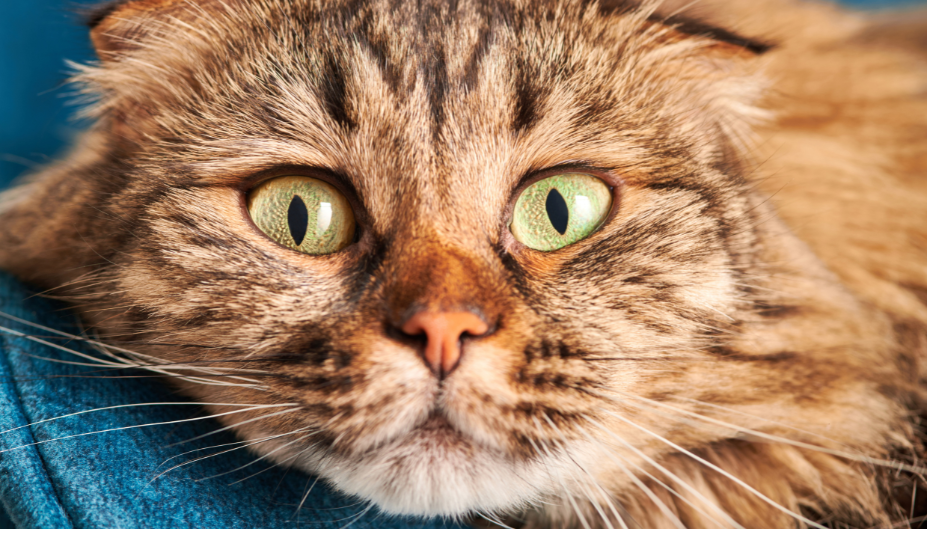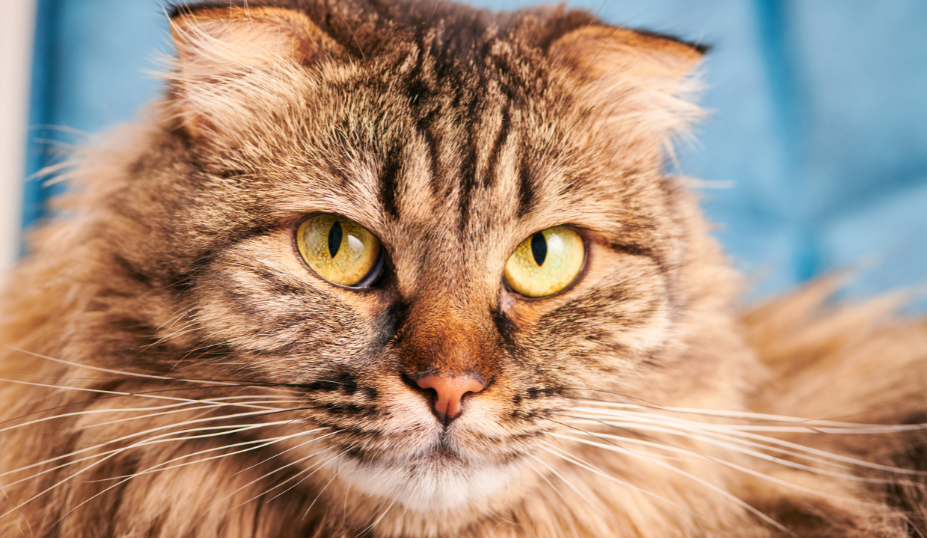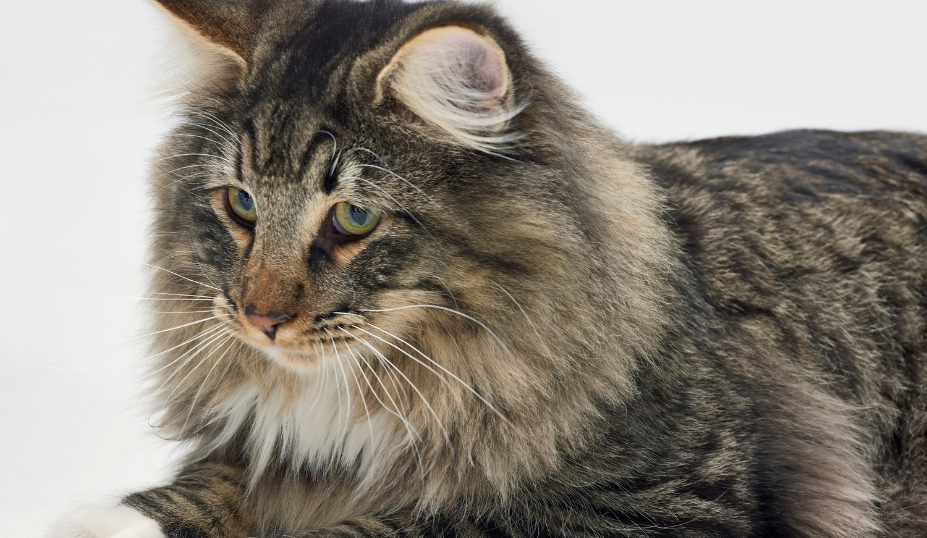Domestic Longhair vs Norwegian Forest Cat: A Comprehensive Comparison
Imagine two felines, both with luxurious coats and captivating gazes. One is a Domestic Longhair—an unpredictable mix of colors, traits, and ancestry. The other is the Norwegian Forest Cat—a Nordic breed built to endure harsh winters. Though they share elegance, their differences run deep.
Domestic Longhairs are a diverse group with fur ranging from 2 to 6 inches, coming in countless colors and personalities. They’re adaptable, affectionate, and unique in their genetic variety. In contrast, the Norwegian Forest Cat is a pedigreed breed from Northern Europe, known for its large, muscular frame and a dense, water-repellent double coat that protects against freezing temperatures.
While both have long fur, the Norwegian Forest Cat’s coat is designed for survival in extreme climates, whereas the Domestic Longhair’s varies widely, making each cat distinct. Beyond appearances, their temperaments and lifestyles also set them apart. Whether you seek a hardy hunter or an adaptable companion, understanding their differences can help you choose the perfect feline friend.
Understanding the Domestic Longhair Cat

The Enigmatic Domestic Longhair: A Breed of Mixed Ancestry
The Domestic Longhair, a beloved pet worldwide, is a breed of mixed ancestry that has captured the hearts of many with its unique characteristics and adaptable nature. Originating in Western Asia, these cats were first imported into Europe in the 16th century and later made their way to America as ship's cats. Despite their mixed heritage, Domestic Longhairs are the third most common type of cat in the United States, known for their striking appearance and varied personalities.
Physical Characteristics
Domestic Longhairs are medium-sized cats, with males typically weighing between 11 and 22 pounds and females slightly smaller. Their height can vary, but they can reach up to 18 inches in body length and up to 12 inches in tail length. The defining feature of Domestic Longhairs is their semi-long to long fur, which can sometimes reach up to 6 inches in length.
Coat Colors and Patterns
Their coat is often a double coat, requiring regular grooming to maintain its appearance and manageability. They can have several coat colors and patterns, including tabby, bi-color, solid color, and tortoiseshell. Some may even have a mane and ear tufts similar to a Maine Coon, but this varies due to their mixed ancestry.
Personality Traits and Behavior
Due to their mixed breed origins, domestic longhairs' temperaments can vary widely. Some cats may be outgoing and affectionate, while others may be shy and aloof. They are often described as loyal, loving, intelligent, and friendly, and they generally get along well with other cats. Some Domestic Longhairs are content to lounge around with their human guardians with occasional short play sessions, while others are highly active, intelligent, and require constant physical and mental stimulation.
Health and Lifespan
The lifespan of Domestic Longhairs can range from 12 to 20 years, depending on several factors, such as diet, exercise, and overall health. As with any cat breed, they can be prone to certain health issues, but these can vary widely due to their mixed-breed origins.
Care and Grooming Needs
Domestic Longhairs require regular grooming to maintain their coat's appearance and manageability. This includes brushing 1-2 times per week, or even daily for some cats, to remove dirt and dead hairs and stimulate the skin. It's also recommended to trim the long hairs around the cat's bottom to prevent fecal matter from adhering to the fur. In addition to grooming, Domestic Longhairs, like all cats, need a nutritious diet, plenty of human companionship, and mental as well as physical enrichment.
Exploring the Norwegian Forest Cat

The Norwegian Forest Cat, affectionately known as "Wegie," is a breed of domestic feline that has thrived in the harsh climates of Northern Europe. Its ancestors, including cold-adapted black and white British Shorthair cats brought by the Vikings around 1000 AD and longhaired cats introduced by Crusaders in the 14th century, have endowed this breed with a unique set of characteristics that enable it to survive and thrive in extreme cold.
Physical Characteristics
With its sturdy build and long, thick coat, the Norwegian Forest Cat is well-equipped to withstand the harshest of winters. Adult females typically weigh between 7.9 and 17.6 lb, while males weigh between 9.9 and 19.8 lb. Their long legs and bushy tails add to their rugged appearance, making them a striking sight to behold.
Personality Traits and Behavior
Norwegian Forest Cats are renowned for their gentle and affectionate nature. They form strong bonds with their owners, who appreciate their playful and independent personalities. While they enjoy human interaction, they are also happy to entertain themselves, making them a great fit for busy households.
Health and Lifespan
With an average lifespan of 14–15 years, Norwegian Forest Cats are a long-term companion. However, with proper care and attention, they can live up to 20 years or more. Regular exercise and a balanced diet are essential to maintaining their overall health and well-being.
Care and Grooming Needs
Despite their thick coats, Norwegian Forest Cats require minimal grooming. A weekly brushing session with a wire bristle brush or metal comb is sufficient to keep their fur looking its best. They may require extra attention during the shedding season to prevent matting and tangling.
Comparing Domestic Longhair and Norwegian Forest Cats

Unraveling the Mystique of Long-Haired Felines
Two breeds of long-haired cats, the Norwegian Forest Cat and the Domestic Longhair captivate feline enthusiasts with their majestic coats and unique characteristics. While they share a common trait – their luscious locks – they differ significantly in terms of physical build, personality, health, and grooming needs.
Physical Prowess
The Norwegian Forest Cat is a sturdy and athletic breed. Males weigh between 13 and 22 pounds and stand 9 to 12 inches tall. Their coat is a marvel of natural engineering, with a water-repellent outer layer and a thick undercoat that sheds heavily in the spring. This magnificent fur is a testament to their origins as a cold-weather hunting breed. Their triangular head and almond-shaped eyes add to their regal appearance.
The Domestic Longhair is a term that encompasses a diverse range of cats with mixed ancestry, united only by their long, flowing coats. Their size can vary greatly, but they typically stand between 8 and 10 inches tall. Their physical characteristics are as varied as their heritage, making each Domestic Longhair a unique individual.
Personality Portraits
The Norwegian Forest Cat is renowned for its affectionate and playful nature. They thrive on human interaction, often initiating play and seeking out cuddles. Their intelligence and curious spirit make them a joy to be around, and their melodious vocalizations are music to the ears of their owners.
Health and Wellness
Both breeds are prone to certain health issues. The Norwegian Forest Cat can be susceptible to heart conditions, hip dysplasia, and a rare genetic disorder that affects their muscles and nerves. The Domestic Longhair, with its mixed ancestry, can inherit health traits from its various forebears, making regular veterinary check-ups essential.
Grooming Essentials
The Norwegian Forest Cat's dense coat requires regular grooming to prevent matting and tangling. During the spring shedding season, daily brushing is a must to prevent hairballs and keep their coat looking their best. The Domestic Longhair also needs regular grooming, although the frequency and technique may vary depending on the individual cat's coat type and length.
While the Norwegian Forest Cat and the Domestic Longhair share a common trait – their stunning long hair – they are distinct breeds with unique characteristics, needs, and personalities. By understanding and appreciating these differences, cat owners can provide the best possible care for their feline friends.
Choosing the Right Cat for You

When it comes to felines, two breeds stand out for their majestic coats and captivating personalities: the Norwegian Forest Cat and the Domestic Longhair Cat. These long-haired lovelies have stolen the hearts of many with their luscious locks and charming antics.
Domestic Longhair Cats
The Domestic Longhair is not a specific breed but rather a term that encompasses cats of mixed or ambiguous ancestry with long hair. Their appearance and personality traits can vary greatly, making each Domestic Longhair a unique individual. Despite their varied heritage, they are often known for their mellow nature, making them a great fit for families with children. Their high grooming needs require daily attention to prevent the matting and tangling of their fur.
Norwegian Forest Cats
The Norwegian Forest Cat, on the other hand, is a specific breed renowned for its imposing build and glossy, water-resistant fur. Originating from Norway, they are natural hunters with a high energy level and a love for adventure. They are known for their ability to climb trees, catch prey, and navigate rough terrains, making them a great fit for those who can provide them with extensive outdoor space.
Grooming Needs: A Crucial Consideration
Both breeds require daily coat maintenance to prevent fur matting and tangling. For the Domestic Longhair, this means gentle combing and brushing to distribute oils and keep fur free of mats. The Norwegian Forest Cat, with its double coat, sheds heavily twice a year and needs regular brushing to keep its coat looking fresh.
Personality Traits: Independence and Affection
The Domestic Longhair is often described as independent, self-assured, and with a high prey drive. It forms strong bonds with its owners but can also be content spending time alone. The Norwegian Forest Cat, while also independent, is known for its loving and calm nature, making it an excellent cuddler and friend.
Considerations for Families, Individuals, and Homes with Other Pets
When choosing between a Domestic Longhair and a Norwegian Forest Cat, consider your lifestyle and the cat's compatibility with other family members and pets. Both breeds require attention and care, but the Norwegian Forest Cat's high energy level and need for outdoor space may make it more suitable for those with a larger living area.
While both the Domestic Longhair and the Norwegian Forest Cat are captivating breeds, they cater to different lifestyles and preferences. By understanding their unique characteristics, grooming needs, and personalities, you can make an informed decision and welcome the perfect feline companion into your home.
Comparison Table: Norwegian Forest Cats vs Domestic Longhair Cats
|
Characteristics |
Norwegian Forest Cats |
Domestic Longhair Cats |
|
Origin |
Norway |
Mixed or ambiguous ancestry |
|
Appearance |
Large, sturdy, thick coat |
Varies significantly due to mixed ancestry
|
|
Personality |
Friendly, interactive, independent, adventurous |
Varies significantly due to mixed ancestry, can range from friendly and playful to shy and quiet |
|
Lifespan |
12 to 20 years |
15 to 17 years |
|
Grooming Needs |
High, requires daily coat maintenance |
Regular grooming to prevent fur from matting |
|
Size |
Average adult height: 9–12 inches, weight: 13–22 lbs |
Average adult height: 8–10 inches, weight varies |
|
Exercise Needs |
Natural hunters, love pouncing and practicing their hunting skills, love to climb and perch
|
Varies, but young cats often enjoy stalking interactive toys |
|
Health Issues |
Generally healthy but can be predisposed to certain genetic disorders, including Hypertrophic Cardiomyopathy (HCM) |
Varies due to mixed breeding background, regular veterinary check-ups advised |
|
Dietary Needs |
Requires a nutritious diet for a healthy coat, specific feeding recommendations should be obtained from a veterinarian |
Requires a nutritious diet for a healthy coat, specific feeding recommendations should be obtained from a veterinarian |
|
Good with Families and Other Pets |
Yes |
Generally, yes |
Conclusion
One thing is clear, both the Norwegian Forest Cat and the Domestic Longhair Cat are enigmatic breeds that defy categorization. Each possesses a unique set of characteristics, traits, and personalities that make them intriguing companions for the discerning owner.
Beyond their stunning physical appearance, it's their complex personalities that truly set them apart. The Norwegian Forest Cat, with its rugged good looks and athletic build, is a master of contrasts - a fierce hunter with a soft spot for snuggles, a playful adventurer with a penchant for quiet contemplation. The Domestic Longhair Cat, with its kaleidoscope of colors and patterns, is a chameleon of emotions - a gentle soul with a mischievous streak, a playful prankster with a heart of gold.
Ultimately, the decision between these two breeds comes down to your lifestyle, preferences, and the specific needs of the cat. Do you crave a cat that will challenge you, push you to be your best self, and reward you with unconditional love? The Norwegian Forest Cat might be the perfect fit. Or do you yearn for a cat that will comfort you, soothe your soul, and provide a sense of calm in a chaotic world? The Domestic Longhair Cat could be your new best friend.
By embracing the mystery of these breeds, you'll be rewarded with a lifetime of wonder, discovery, and unforgettable moments. So, which breed will you choose? Will you be captivated by the rugged charm of the Norwegian Forest Cat or enchanted by the whimsical nature of the Domestic Longhair Cat? Whatever your decision, one thing is certain, you'll discover companionship and joy that will leave you perfectly content.







